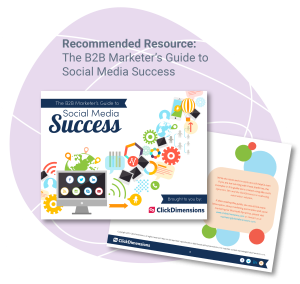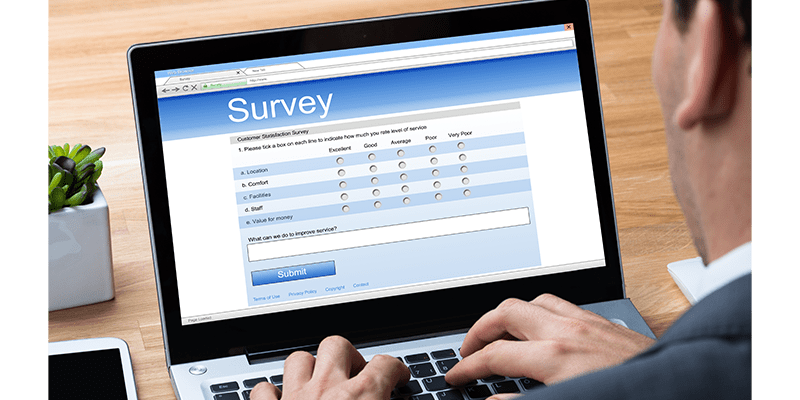Marketing
What is Social Selling and How Can You Get Started?
by clickdimensions

It’s no surprise that in an all-digital landscape, nearly half of the world’s population is now active on social media. While it’s important for your business to be represented through your corporate accounts, there’s another point of view that’s equally as important and needs to be represented – your sales team.
Your sales team plays just as big of a role in maintaining your brand’s reputation and image on social media as your marketing team does. Social selling empowers sales leaders to be in charge of their own destiny by creating their own online persona and brand narrative instead of chasing the curve.
What Is Social Selling?
Social selling is the process of executing long-term sales tactics and strategies on social media by establishing credibility and creating a community. This includes posting relevant content, connecting with prospects and interacting with customers.
In turn, if your sales team uses social media to identify, engage with and nurture prospects, they will better understand the role that social plays throughout the organization and become passionate online ambassadors of your brand. Here are six steps sales reps can take to get started with social selling:
1. Share useful content
So, you’re ready to grow your social presence, but what do you post? Blogs provide a wealth of resources and are an easy way to curate content for your feed. Subscribe to popular newsletters within your industry, then share on-trend posts that you believe will resonate with your prospects. Sharing interesting and helpful content helps to establish authority within your community by providing value to your followers.
When you’re ready to take things a step further, begin sharing your own original content. This could be a blog post you write yourself – but it doesn’t have to be. Posts that provide unique insights such as tips or advice outperform generic promotion posts every time. If you’re stuck on brainstorming ideas, reflect on major projects you’ve worked on or interesting articles you’ve read. What were the main takeaways? What did you learn? Share your genuine experiences and conversations will follow.
2. Join and participate in community groups
Start conducting initial research by analyzing your customers and prospects social media profiles. Dig deeper to find what groups they’re a part of and most active in. Join these groups and regularly monitor them to keep an eye on what topics are discussed. If an opportunity arises, chime in by contributing relevant advice or resources. However, be sure not to promote your own products or be too sales-focused, as this will leave a negative lasting impression – and you may be kicked out of the group altogether. Additionally, this gives you valuable insight into what your prospects care about and the challenges they may be facing.
3. Be engaged
Social selling is all about being social – you need to engage and connect with others. Through commenting on, liking, and sharing prospects’ and customers’ posts, you’ll foster relationships with potential buyers and boost their trustworthiness by demonstrating shared interests. Be sure that you are taking every opportunity to participate in conversations, follow others, be helpful and establish meaningful connections. Being an engaged follower can look like congratulating them for their wins and empathizing with them during their losses. The goal is to build authentic connections, not push your own product through this process.
Download our Latest Resource: The B2B Marketer’s Guide to Social Media Success
4. Utilize social listening tools
Instead of logging into each social platform daily, social listening tools enable you to monitor your customers’ and prospects’ social activity all from one spot. From there, you can engage in conversations based on the keywords and alerts you set up, as well as respond to anyone who mentions you. For example, if your sales team knows there are three main activities or events that frequently create qualified leads, set up keyword alerts surrounding these events. Once a prospect expresses that they’re experiencing a problem, this is your chance to join the conversation and offer a helpful solution.
5. Share firsthand stories
There’s a reason that customers across all industries consult reviews during their decision-making process – they serve as a less-biased form of proof. Potential buyers instinctively trust customer testimonials far more than information coming straight from your brand. Proven success stories help potential buyers see how others have been able to use your products or services and help prospects identify with your brand. If potential customers are given examples of the positive outcomes your brand provides, they are able to envision how they can use your products in their own life.
6. Measure success metrics
It’s vital to regularly monitor what content is performing well and what isn’t. By measuring engagement on your profile, you’ll learn from what works best and scrap content that doesn’t resonate. For example, if you notice that when you post content about B2B sales tools, you get more likes, shares and comments than when you post other content, that’s a good indication that you should continue to post similar topics. Additionally, if your posts begin to spark conversations in the comments section, join in. Focusing on the comments will enable you to understand your prospects’ point of view more deeply.
Bonus tip: seek referrals. After building solid relationships based on credibility and trust, the opportunity may arise to ask for a referral. If you identify a potential customer that you would like to reach out to, look at their social profiles to see you have any common connections. If so, ask these connections if they would be willing to introduce you. Save this for special occasions, because if you ask for too many referrals, you risk being seen as taking advantage of your network, not adding value to it.
Happy Selling!








